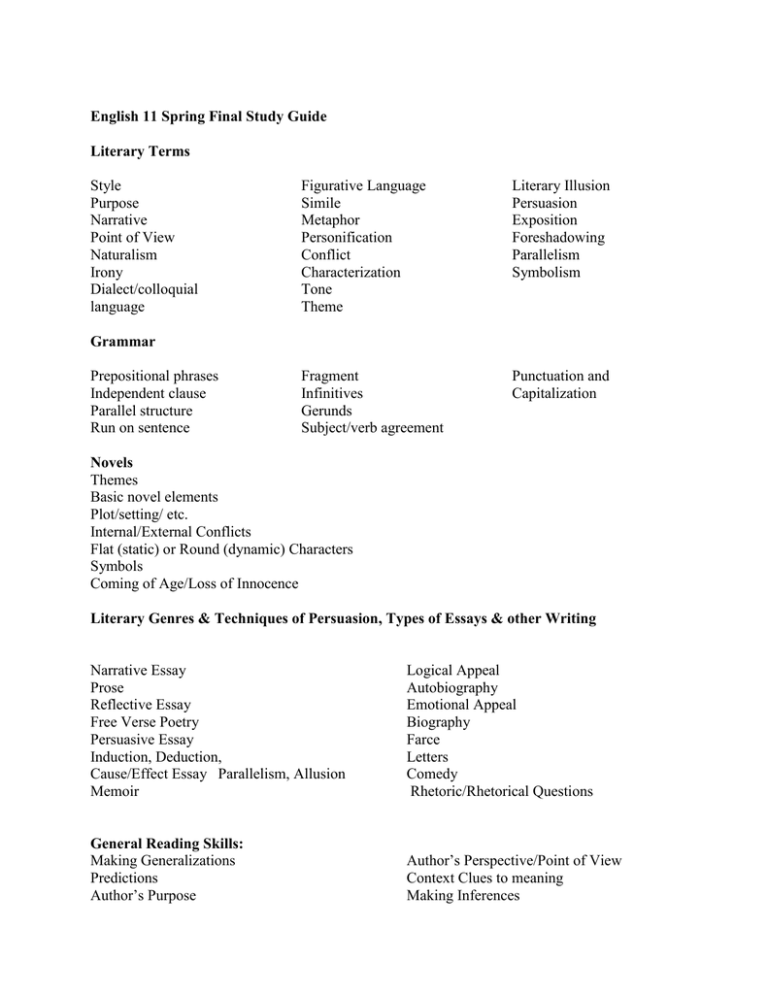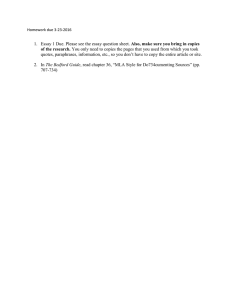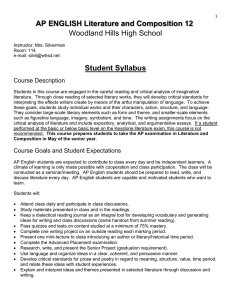English 11 Spring Final Study Guide Literary Terms Style
advertisement

English 11 Spring Final Study Guide Literary Terms Style Purpose Narrative Point of View Naturalism Irony Dialect/colloquial language Figurative Language Simile Metaphor Personification Conflict Characterization Tone Theme Literary Illusion Persuasion Exposition Foreshadowing Parallelism Symbolism Fragment Infinitives Gerunds Subject/verb agreement Punctuation and Capitalization Grammar Prepositional phrases Independent clause Parallel structure Run on sentence Novels Themes Basic novel elements Plot/setting/ etc. Internal/External Conflicts Flat (static) or Round (dynamic) Characters Symbols Coming of Age/Loss of Innocence Literary Genres & Techniques of Persuasion, Types of Essays & other Writing Narrative Essay Prose Reflective Essay Free Verse Poetry Persuasive Essay Induction, Deduction, Cause/Effect Essay Parallelism, Allusion Memoir Logical Appeal Autobiography Emotional Appeal Biography Farce Letters Comedy Rhetoric/Rhetorical Questions General Reading Skills: Making Generalizations Predictions Author’s Purpose Author’s Perspective/Point of View Context Clues to meaning Making Inferences Facts vs. Opinion Writing: *Essay format for Juniors: Intro Paragraph with Attention Getter/Grabber and strong Thesis Statement 3 body paragraphs of 8 or 11 sentences including topic sentence with transitions, 2-3 concrete details and 2-3 commentaries, and a conclusion sentence Conclusion paragraph answering question, “why is what I just wrote important?”, challenge to reader (persuasive), summary, further commentary wrap-up to give a finished feeling to essay. MLA Format for Research and using sources in writing MLA Heading for Essays *Better Answers – Hamburger format -General Topic Sentence with gist to answer question -2-3 sentences of support with transitions -Concluding statement

